Stroboscopes are highly stable industrial quality instruments for non-contact RPM measurement as well as for inspection and observation of moving parts.
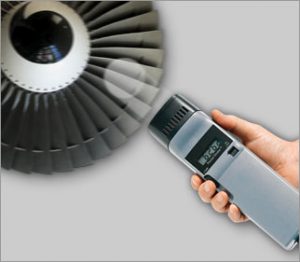
Stroboscopes are highly stable industrial quality instruments for non-contact RPM measurement as well as for inspection and observation of moving parts.

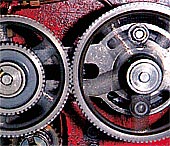 If a periodic flash is aimed at a rapidly rotating or oscillating object at always the same position, the object appears to stand still or to move in slow motion.
If a periodic flash is aimed at a rapidly rotating or oscillating object at always the same position, the object appears to stand still or to move in slow motion.
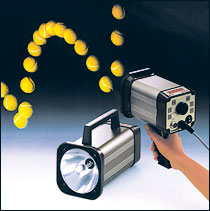 The true RPM (min-1):
The true RPM (min-1):
All stroboscopes give the illusion of stopped motion when flashing in submultiples of the true speed.
To obtain the correct RPM:
Turn frequency always from the highest RPM downwards. When the first single image appears, read the true RPM. To verify this, double the flash rate, you then might see 2 images. If the flash rate, however, is below the actual RPM value by 1/even numbers, a freezed motion with only one image will appear.
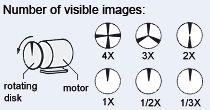 Measuring higher RPM than the stroboscope-range using harmonics:
Measuring higher RPM than the stroboscope-range using harmonics:
All instruments can be used also to measure higher RPM by using the images effect:
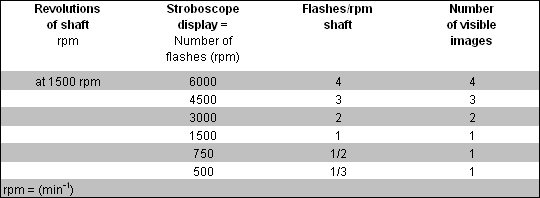
Phase shift adjustment permits movement of objects to desired position for convenient observation.